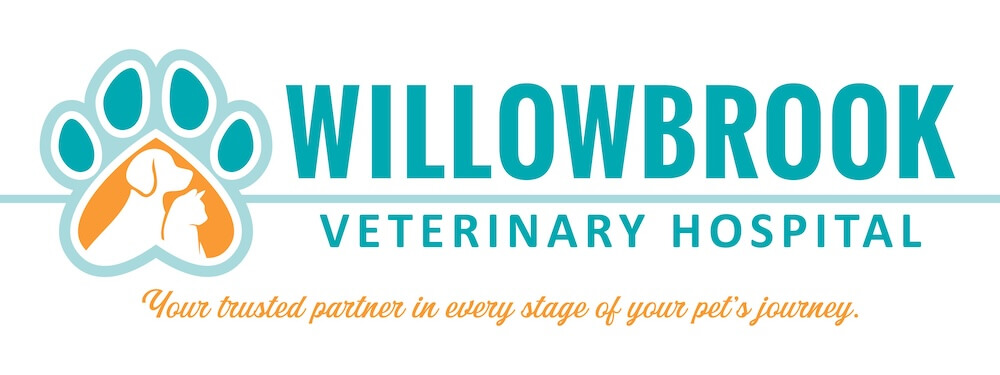At Willowbrook Veterinary Hospital, we understand how frightening it can be when your dog is injured or suddenly becomes ill. Knowing when your dog is experiencing a true emergency—and what steps to take—can make a life-saving difference. Below, we’ve compiled answers to some of the most common questions about dog emergencies to help you feel more prepared.
How do I know if my dog is experiencing a real emergency?
If your dog is showing signs of severe pain, distress, or sudden changes in behavior or physical ability, it may be an emergency. If you’re ever in doubt, it’s always better to err on the side of caution and contact a veterinary professional immediately.
Common Signs of a Medical Emergency in Dogs:
- Difficulty breathing or choking
- Collapse or unconsciousness
- Persistent vomiting or diarrhea, especially with blood
- Seizures
- Swollen or bloated abdomen
- Inability to stand, walk, or use a limb
- Bleeding that won’t stop
- Signs of severe pain (whining, panting, trembling)
- Pale or bluish gums
- Sudden behavioral changes (confusion, aggression)
What types of injuries are considered emergencies?
- Hit by a car or other trauma
- Deep cuts, puncture wounds, or bleeding that doesn’t stop
- Suspected broken bones
- Burns or electrical shock
- Eye injuries
- Animal bites or fights
- Most Common Dog Health Emergencies We See:
- Bloat (gastric dilatation and volvulus)
- Heatstroke
- Toxic ingestion (e.g. chocolate, xylitol, medications, plants)
- Seizures
- Allergic reactions
- Foreign object ingestion
What if my regular vet doesn’t offer emergency care?
If we’re closed and your dog needs urgent help, we recommend going directly to a 24/7 emergency veterinary hospital. We can provide you with a list of trusted local emergency clinics to keep on hand.
Emergency Vet vs. Urgent Care Clinic
Emergency Vets handle life-threatening, critical situations and are open 24/7.
Urgent Care Clinics typically handle non-life-threatening but time-sensitive issues (like minor wounds, infections, or vomiting) during normal or extended business hours.
What to Expect at the Emergency Vet
- Immediate triage: Patients are prioritized based on the severity of their condition.
- Diagnostics (X-rays, bloodwork, etc.) may be performed quickly.
- You may be asked to wait during treatment, but most facilities allow pet parents to stay informed or close by if possible.
First Aid for Dogs
Sometimes it is necessary to perform first aid to stabilize your dog prior to transport to your nearest veterinary emergency clinic.
- For external bleeding or trauma, apply direct pressure to the wound with towels and maintain firm pressure until you arrive at the clinic. You can try elevating the affected area if possible.
- If your dog is choking, carefully check their mouth for obstructions—but never risk getting bitten.
- For CPR: Lay your dog on their side. Compress the chest about 1/3 its depth at a rate of 100–120 compressions per minute. If your dog isn’t breathing, give mouth-to-snout breaths every 30 compressions. Only perform CPR if the dog is truly unresponsive and not breathing.
Signs of Poisoning
- Drooling, vomiting, tremors, seizures, or collapse.
- Call the Pet Poison Helpline or head to an emergency vet right away.
- Bring the packaging or substance (if known) with you.
If you see your dog ingest a toxic substance it is important to see veterinary care immediately. Call on your way and tell them exactly what they ingested. If you aren’t sure if a product is toxic, the Pet Poison Hotline is a great resource. Their phone number is (855) 764-7661.
Emergency Supplies to Keep at Home
- Pet first-aid kit (bandages, gauze, antiseptic wipes, digital thermometer)
- Emergency vet contact list
- Muzzle or towel (to prevent biting during pain)
- Hydrogen peroxide (use only if instructed to induce vomiting)
- Copies of medical records
How to Prevent Emergencies
- Supervise outdoor activity and limit exposure to toxins
- Keep dangerous foods and medications out of reach
- Use leashes and harnesses on walks
- Stay on top of regular vet visits to catch issues early
Do I Need to Call Ahead?
Yes, if possible. Calling ahead allows the emergency vet to prepare for your dog’s arrival and triage accordingly.
Can I Stay With My Dog?
Policies vary by clinic, but many emergency hospitals allow you to stay for part or all of the visit, depending on the situation.
Questions or Concerns?
Don’t hesitate to call us at Willowbrook Veterinary Hospital. We’re here to help you care for your dog through both routine care and the unexpected.
Contact us at: (503) 968-2911 or [email protected]
